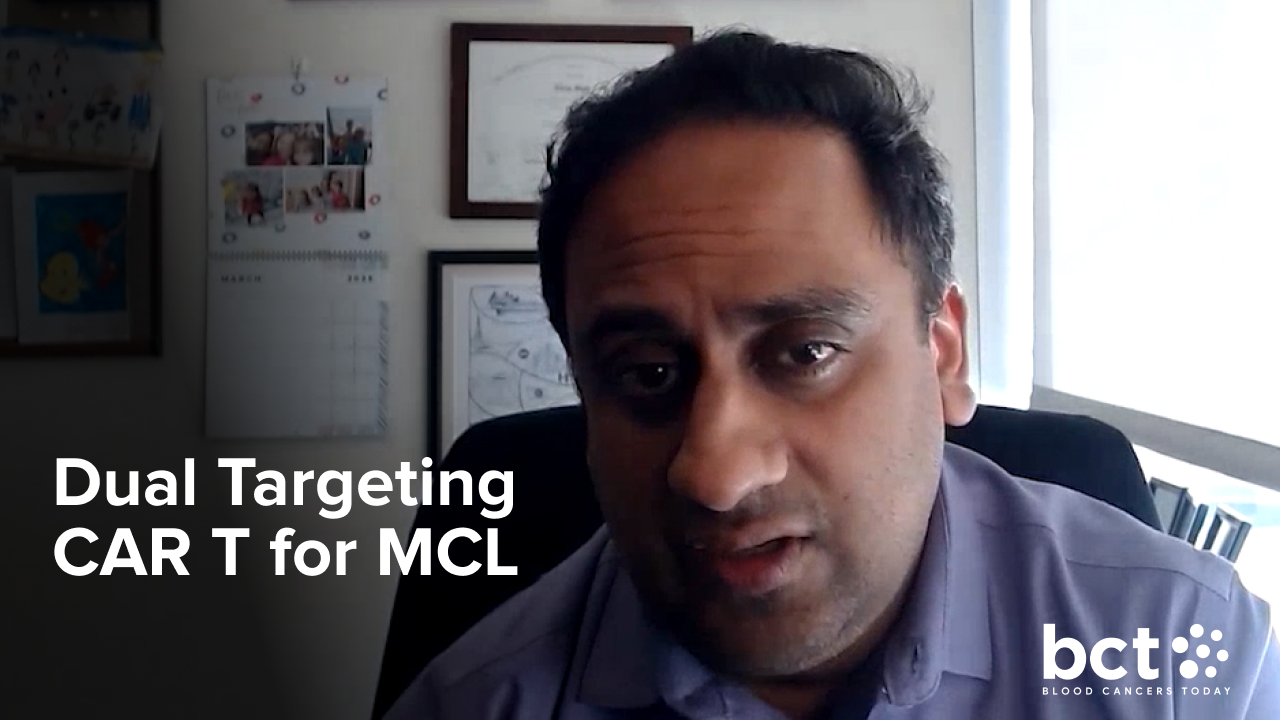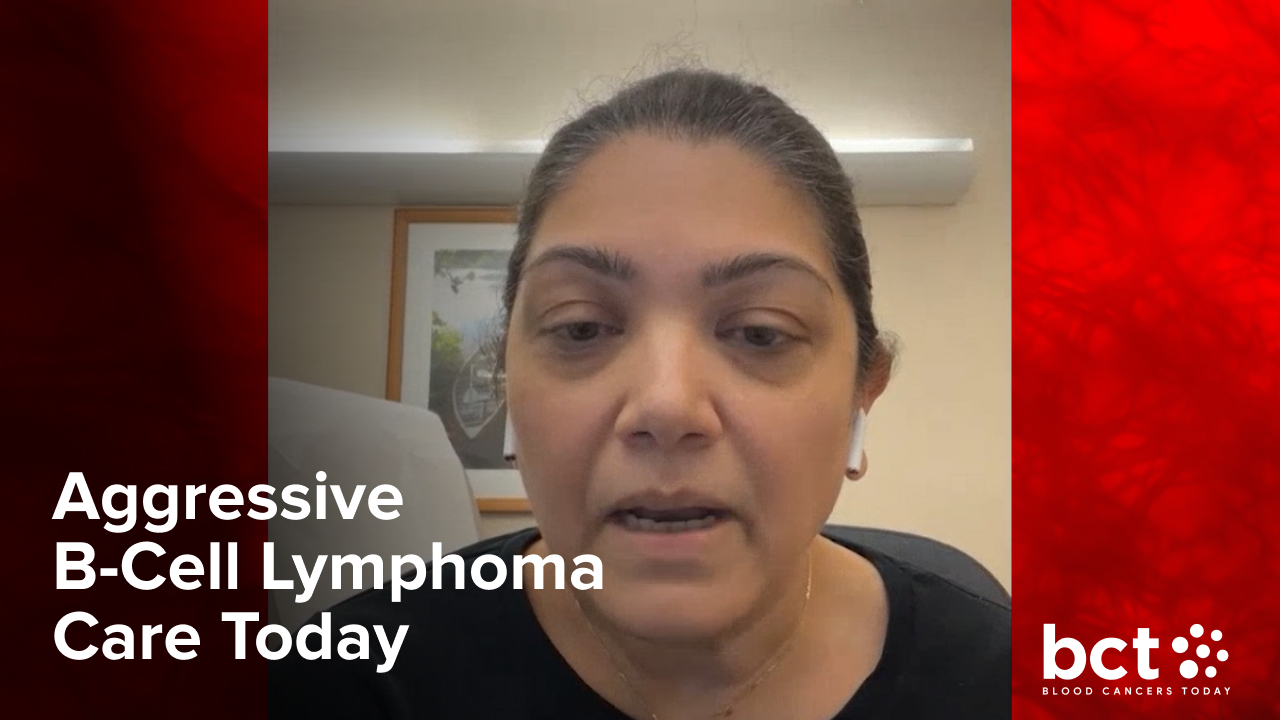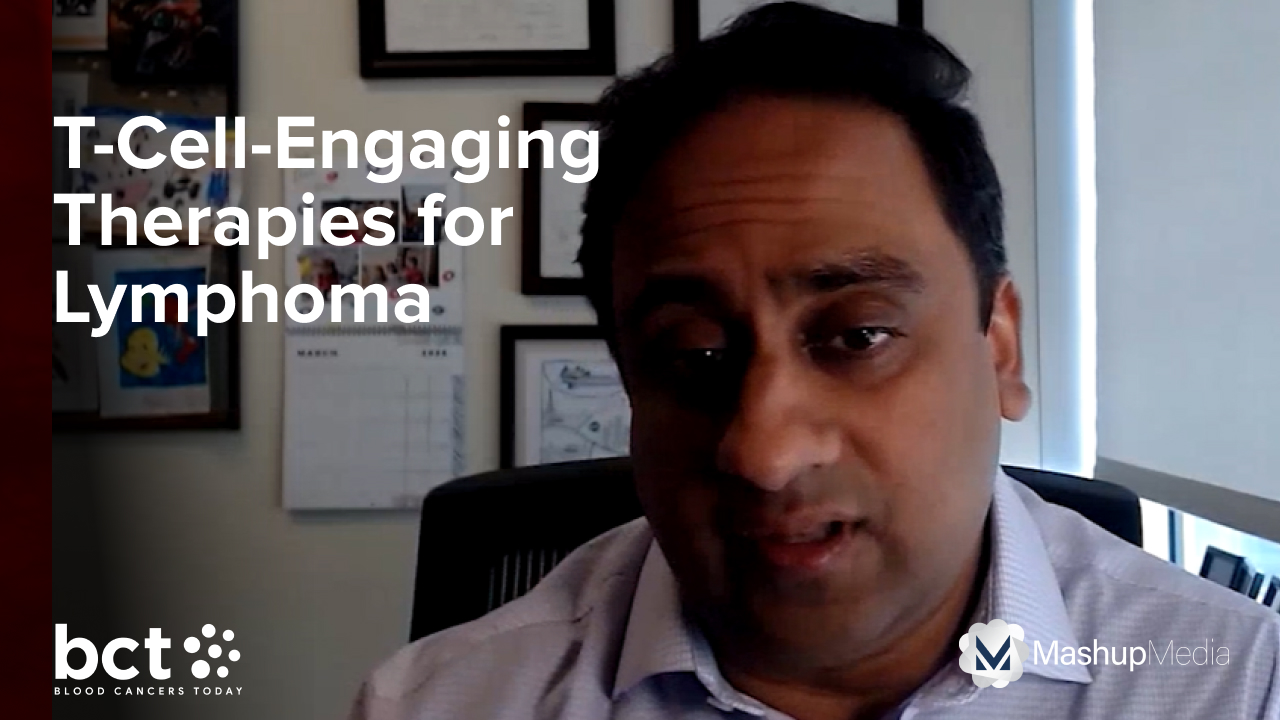
With increasing evidence of efficacy as front-line treatment in relapsed/refractory disease, clinicians are excited to see how many patients could benefit with CAR T-cell therapy.
The year 2022 marks the 5th anniversary of the US Food and Drug Administration’s (FDA’s) approval of a first-in-modality chimeric antigen receptor (CAR) T-cell therapy. In August 2017, tisagenlecleucel (tisa-cel) was approved for certain pediatric and young adult patients with acute lymphoblastic leukemia (ALL).1
Since tisa-cel’s approval, the field of CAR T-cell therapy has exploded. There are currently 5 approved therapies for hematologic malignancies, including relapsed/refractory diffuse large B-cell lymphoma (LBCL), transformed follicular lymphoma, mediastinal B-cell lymphoma, B-cell precursor ALL, mantle cell lymphoma, and multiple myeloma. More than 500 clinical trials of the therapy are being conducted worldwide.2
There are currently five FDA-approved CAR T-cell therapies:
- Axicabtagene ciloleucel (axi-cel; Yescarta) relapsed/refractory adult DLBCL, transformed follicular lymphoma, primary mediastinal B-cell lymphoma
- Brexucabtagene autoleucel (brexu-cel; Tecartus) relapsed/refractory B-cell precursor ALL, R/R mantle cell lymphoma
- Idecabtagene vicleucel (Abecma) multiple myeloma
- Lisocabtagene maraleucel (liso-cel; Breyanzi) relapsed/refractory large B-cell lymphoma
- Tisagenlecleucel (tisa-cel; Kymriah) pediatric and young adult ALL, R/R DLBCL
“CAR T-cell therapies have provided options when there were no good options available,” Michael R. Bishop, MD, Director of the David and Etta Jonas Center for Cellular Therapy at the University of Chicago told Blood Cancers Today. “Because of these therapies, we have been able to provide a treatment to people who are completely refractory to conventional chemotherapy, targeted agents, and relative forms of immunotherapy.”
Specialists like Dr. Bishop hope that the last 5 years are only the beginning of the potential for CAR T-cell and other cellular therapies in hematologic malignancies.
The Second Line
Among the exciting anticipated next steps in the advancement of CAR T-cell therapy is the move to second-line treatment—or first-line in the relapsed/refractory setting. Several trials presented at the 2021 American Society of Hematology (ASH) Annual Meeting & Exposition tested CAR T-cell therapy in this setting and found largely positive results.
The ZUMA-7 trial tested axicabtagene ciloleucel (axi-cel) against standard-of-care treatment in 180 patients with LBCL that was refractory to or had relapsed within 12 months of first-line chemoimmunotherapy. Axi-cel proved superior to standard of care with a median event-free survival (EFS) 4 times that of standard of care (8.3 vs. 2.0 months; hazard ratio [HR], 0.40; 95% CI, 0.31-0.51; P < .001). Two years after therapy, 41% of patients assigned to axi-cel remained alive, disease-free, and in remission compared with only 16% of patients assigned to standard of care. Most patients (83%) responded to treatment with axi-cel, compared with half of those in the standard-of-care group.3
“ZUMA-7 was remarkable because it proved, in a randomized fashion, that CAR T-cell therapy is a superior treatment to the current standard of care,” said Frederick Locke, MD, Vice Chair of the Department of Blood and Marrow Transplant and Cellular Immunotherapy at Moffitt Cancer Center, and an investigator on the ZUMA-7 trial. “Overall survival was evaluated as an interim analysis and was not statistically better with axi-cel. However, many patients who were randomized to standard of care went on to get CAR T-cell therapy off-study.”
Based on these results, axi-cel’s manufacturer Kite Pharma submitted a supplemental Biologics License Application to the FDA for use in the second-line setting.4
An interim analysis of the TRANSFORM trial evaluating second-line lisocabtagene maraleucel (liso-cel) in patients with LBCL also reported positive results. As with the tisa-cel study, treatment with liso-cel led to an event-free survival more than 4 times longer than that of standard of care (10.1 vs. 2.3 months; HR, 0.349; P < .0001). Liso-cel also significantly increased the likelihood of complete response, which occurred in 66% of patients receiving the treatment compared with 39% of those assigned to standard of care (P < .0001).5
“Moving up these therapies to the second line is a key step, and that means identifying high-risk patients with LBCL and potentially giving the treatment earlier,” Dr. Locke said. “This is the next step to realizing the full value of this therapy.”
BELINDA, the Outlier
While the highly anticipated clinical trials of anti-CD19 CAR T-cell therapies have largely had glowing results, there is one outlier among the group: the phase III BELINDA trial. BELINDA compared standard of care with tisa-cel in 322 patients with ABCL that was refractory to or had progressed within 12 months of first-line therapy. Tisa-cel was not found to improve event-free survival compared with standard salvage therapy, which consisted of chemotherapy followed by an autologous stem cell transplant for patients responding to chemotherapy. Median event-free survival in both groups was 3.0 months (HR, 1.07; 95% CI, 0.82-1.40; P = .61).6
The results were met with surprise, to put it lightly. “This is something I wake up thinking about and something I go to bed thinking about,” said Dr. Bishop, who was an investigator on BELINDA. “In many ways, we just do not know what happened because it was a shock that the trial was not positive.”
Multiple factors could help explain these results, Dr. Bishop said. One of the primary reasons may have been the relatively long time to infusion in the tisa-cel arm. In BELINDA, patients received CAR T-cell therapy at a median of 52 days after leukapheresis, compared with much shorter times in the ZUMA-7 and TRANSFORM trials, he noted.
“This is a very aggressive disease,” Dr. Bishop said, “and we need to get cells in there quicker.”
There were also subtle differences in terms of the level of lymphodepleting chemotherapy that trial participants received, with BELINDA giving the least intense regimen of the three trials. Another possible reason for the disappointing trial results is how EFS was defined in the BELINDA trial. Dr. Bishop said that investigators looked at events at the 12-week mark, even though events could have been observed before onset of treatment response.
Finally, BELINDA allowed for optional bridging therapy, with most patients who received tisa-cel also receiving chemotherapy before CAR T-cell infusion at their physician’s discretion.
“ZUMA-7 did not allow bridging therapy and TRANSFORM only allowed one cycle of bridging,” Dr. Bishop said. “With BELINDA, we allowed as much bridging therapy as investigators deemed necessary and that contributed to the delay in getting cells infused, but without any apparent significant benefit.”
All these components together would partially explain the unexpected results. The other possibility, Dr. Bishop said, lies in the product itself.
CAR T-Cell Resistance
Despite its success, several factors can limit the use or efficacy of CAR T-cell therapy, some of which are biologic, according to Marco Ruella, MD, Assistant Professor of Medicine and Scientific Director of the Lymphoma Program at the Hospital of the University of Pennsylvania.
“Some patients do not have the right blood counts to receive CAR T-cell therapy,” Dr. Ruella said. “Other patients might have very aggressive disease and cannot wait for the CAR T cells to be manufactured.”
In addition, even people who receive CAR T-cell therapy may not respond to the treatment for a variety of reasons, including T-cell exhaustion.
“T-cell exhaustion can occur in patients who have received multiple therapies before CAR T-cell infusion,” Dr. Ruella said. “In that case, those T cells can be exhausted or terminally differentiated, and the CAR T-cell product will not be active or strong enough to induce long-term remissions.”
The tumor microenvironment plays a crucial role in T-cell dysfunction, Dr. Ruella explained. Research into the role of the microenvironment is ongoing but it seems that, especially in lymphoma, it can present an immunosuppressive environment where tumor-associated macrophages and other elements can limit the function of CAR T-cell therapy.
“In the case of a patient with an immunosuppressive microenvironment, the CAR T-cell product might be good, but it will not work in that particular patient,” he said.
Another biologic cause of CAR T-cell therapy failure is tumor intrinsic factors that regulate the tumor microenvironment. Again, the patient may have a good CAR T-cell product available, but intrinsic alterations in tumor cells may make them resistant to killing, Dr. Ruella explained.
For example, researchers recently described alterations in the apoptosis pathway as potential mechanisms for immune evasion leading to CAR T-cell dysfunction in acute lymphoblastic leukemia.7 Tumor antigen escape, which occurs with the loss or downregulation of the target antigen, is another common mechanism of resistance to CAR T-cell therapy.
“This is particularly relevant for ALL and is becoming more relevant in lymphoma as we are realizing that many relapses are caused by loss of CD19 on the cell surface,” Dr. Ruella said. “This means that immune cells are totally invisible to the CAR T cells and, therefore, the patient’s disease relapses.”
In addition to these biologic factors, some logistical factors are limiting the more widespread use of CAR T-cell therapy in the clinic.
“The fact remains that CAR T-cell therapy is a treatment that is administered at only a limited number of centers,” said Ajeet Gajra MD, FACP, Vice President and Chief Medical Officer of Cardinal Health.
To deliver CAR T-cell therapy to eligible patients, clinicians must overcome barriers such as availability of the therapy, location of treatment centers, and its related costs.
“For some patients, even the idea of receiving CAR T-cell therapy may be a barrier,” Dr. Gajra said. “They are overwhelmed by the prospect of undergoing apheresis to collect the T cells that are then genetically engineered and put back into their body.”
CAR T-cell therapy also requires an extended stay at or in close proximity to the hospital or treatment center after the procedure to monitor for and manage associated toxicities.
Dr. Gajra offered the following anecdote. “I recently heard about a patient who was the caregiver for her mother with Alzheimer disease. She could not be away from home for the long period of time required to receive CAR T-cell therapy. Instead, she told her doctor to just treat her with whatever therapy she could get locally.”
More than half of all US patients with cancer are treated in community-based oncology practices. The fact that a large number of patients who could potentially benefit from this therapy are not getting it is a significant source of frustration, according to Dr. Bishop.
Bringing CARs to the Community
Currently, administration of CAR T-cell therapy is not feasible in the community oncology setting. While Dr. Bishop said that it is possible, moving CAR T-cell therapy into these centers would require a large hospital or group of oncologists to band together and decide to provide the type of coverage and infrastructure needed to provide this treatment.
“They need to be comfortable with the products and managing the associated side effects,” Dr. Bishop noted. “If that happens, it should become another treatment option in the community setting.”
Dr. Gajra said that community oncologists do seem to be warming up to the idea of referring patients for CAR T-cell therapy.
At the 2021 ASH Annual Meeting, Dr. Gajra and colleagues presented data from a survey of 371 community hematologist/oncologists who were asked about their CAR-T therapy use, referral patterns, barriers experienced, as well as overall impressions of this class of therapy. Most providers (72%) had referred a patient for CAR T-cell therapy since the first agent was approved in 2017, and about half (53%) had referred a patient in the last 6 months.8
The results revealed patient deterioration prior to CAR T-cell administration and a slow approval process by payers as common barriers. Other center-related challenges perceived by the survey respondents include failure in manufacturing CAR T-cell products, a lack of communication from the infusion center during the process, and lack of clear instructions to the referring oncologist about follow-up care.
Cost, however, was not reported as a major barrier to prescribing or recommending CAR T-cell therapy, with 60% of participants saying that they thought the prices for this breakthrough therapy is acceptable.
However, community physicians have heard the message about improved outcomes with CAR T-cell therapy loud and clear, Dr. Gajra said. “Among community hematologist/oncologists, there is an understanding that it may not be their job to decide whether someone gets CAR T-cell therapy but to refer those patients in a timely manner,” he explained.
Dr. Locke agreed. “We have not yet hit the limit in terms of the number of CAR T-cell treatments that could be performed [for LBCL].” Instead, he said, not enough patients are being referred. Patients do need to be relatively fit, but comorbitities may not be a reason to exclude patients from referral. Age should not be a limiting factor, either, Dr. Locke added.
“I would prefer that community oncologists refer patients to centers that perform CAR T-cell infusion to decide whether a patient is well enough to undergo the treatment,” Dr. Locke said.
In fact, encouraging data came from a real-world analysis of tisa-cel in 405 patients with relapsed/refractory ABCL from the Center for International Blood and Marrow Transplant Research (CIBMTR) Registry. Registry patients who received commercial tisa-cel experienced similar efficacy outcomes and more favorable safety outcomes than patients how were enrolled in the pivotal phase II JULIET trial, even though two-thirds of the real-world patient population did not appear to meet JULIET eligibility criteria (FIGURE 1).9
Similarly, a study of brexucabtagene autoleucel (brexu-cel) in a group of patients with relapsed/refractory mantle cell lymphoma treated in the US Lymphoma CAR T Consortium showed encouraging efficacy and safety results that were comparable to those seen in the phase II ZUMA-2 trial (TABLE 1). Notably, although 73% of the patients would have been ineligible for ZUMA-2, the overall response and complete response rates were comparable to those reported in ZUMA-2.10
Myeloma: The Next Frontier
Unlike in lymphoma, the first disease with multiple CAR T-cell therapy approvals, in multiple myeloma, access to CAR T-cell therapy manufacturing and variability of results can be problematic.
Dr. Bishop noted that the treatments proven successful in LBCL and ALL target the same exact receptor—CD19. In multiple myeloma, investigational CAR T-cell products target a different receptor—B-cell maturation antigen (BCMA).
“One BCMA-targeting product had almost no efficacy, while another had close to a 100% efficacy rate in terms of response and durability, indicating that the receptor in BCMA is very important, but that there is still a lot to be learned,” Dr. Bishop said of recent clinical trials.
Tumor heterogeneity and antigen escape are also underlying mechanisms of resistance for myeloma-directed CAR T-cell products.
Data presented at the 2021 ASH Annual Meeting raised another concern about CAR T-cell therapy in patients with myeloma, showing that less than 10% of patients were expected to be eligible to reach the fourth line of therapy or to receive CAR T-cell transfer.11 These data highlight the need to move this therapy into earlier lines when possible and to expand its applicability by bringing it to a population that better represents real-world patients, the authors concluded.
CARs Come off the Shelf
One alternative to autologous CAR T-cell therapy that holds promise is off-the-shelf, mass-produced allogeneic products. Off-the-shelf engineered immune effector cells in development have the distinct advantage of not being patient-derived, as existing CAR T-cell therapies are, explained Veronika Bachanova, MD, PhD, Professor of Medicine at the Division of Hematology, Oncology and Transplantation at the University of Minnesota.
“CAR T-cell therapy is manufactured batch by batch and engineered for each single patient,” Dr. Bachanova said, compared with commercially available CAR T-cell products that may take weeks to manufacture. “An off-the-shelf option, one derived from induced pluripotent stem cell lines for example, are manufactured into immune effector cells in mass production, cryopreserved, stored, and then made available for widespread use without a need for patient-specific manufacturing.”
Most of these allogeneic CAR T-cell products are in the early stage of clinical trial testing, and multiple avenues are being explored.
“These products are heterogeneous in terms of how they are manufactured and the source of genetic manipulation, either CRISPR technology or TALEN technology,” Dr. Bachanova said. “There is opportunity for widespread and complex genetic manipulation to induce novel function such as dual-targeting or membrane-bound or secreted cytokines, which induce persistence and expansion in vivo or knock down the checkpoint pathways, which can enhance the function.”
Dr. Bachanova discussed phase I results of FT596, a first-in-class, multi-antigen targeted, off-the-shelf, induced pluripotent stem cell–derived CD19-targeting CAR natural killer (NK) cell therapy in patients with relapsed/refractory BCL and chronic lymphocytic leukemia. As the investigators explained, “FT596 has three anti-tumor modalities: a proprietary CD19-targeting CAR; a novel high-affinity, non-cleavable CD16 Fc receptor that enables tumor targeting and enhanced antibody-dependent cell cytotoxicity in combination with a therapeutic monoclonal antibody; and IL-15/IL-15 receptor fusion promoting cytokine-autonomous persistence.”12
“NK cells have a unique role in mediating antibody-dependent killing that can be combined with a number of antibodies,” Dr. Bachanova said. “The antibodies then target the particular tumor protein.”
Dr. Bachanova said the most pronounced difference between NK and T-cell therapies is that NK therapies do not seem to produce the cytokine release syndrome or neurotoxicity that typically occur with CAR T-cell therapy. Although these adverse events have become less concerning since specialists have learned more about their optimal management.
The accessibility of off-the-shelf products within days would make them incredibly useful for patients with rapidly progressing disease. Potentially, these products might also not require the complex infrastructure needed for CAR T-cell therapy infusion, Dr. Bachanova said. However, the learning curve would still be steep, particularly in managing potential side effects.
“In time, I would hope that allogeneic cellular therapies like this might replace traditional transplant but figuring out the optimal way to use off-the-shelf CAR NK cells will require a lot of smart design and testing,” Dr. Bachanova said. “That is why the field will need to be open-minded. This is not something we have done before.”
In all, the future is bright for this type of therapy, Dr. Locke said.
“Cellular therapy has tremendous promise as a therapeutic and I have no doubt we will continue to see the development and approvals of therapies in this space.”
Leah Lawrence is a freelance health writer and editor based in Delaware.
References
- US Food and Drug Administration. FDA approval brings first gene therapy to the United States. Accessed January 25, 2022. https://www.fda.gov/news-events/press-announcements/fda-approval-brings-first-gene-therapy-united-states.
- Albinger N, Hartmann J, Ullrich E. Current status and perspective of CAR-T and CAR-NK cell therapy trials in Germany. Gene Therapy. 2021;28:513-527.
- Locke FL, Miklos DB, Jacobson CA, et al. Axicabtagene ciloleucel as second-line therapy for large B-cell lymphoma. N Engl J Med. 2021 Dec 11; NEJMoa2116133.
- Gilead. Kite Submits Supplemental Biologics License Application to U.S. Food and Drug Administration for Earlier Use of Yescarta® in Large B-cell Lymphoma. September 30, 2021. Accessed January 25, 2022. https://www.gilead.com/news-and-press/press-room/press-releases/2021/9/kite-submits-supplemental-biologics-license-application-to-us-food-and-drug-administration-for-earlier-use-of-yescarta-in-large-bcell-lymphoma.
- Kamdar M, Solomon SR, Arnason JE, et al. Lisocabtagene maraleucel (liso-cel), a CD19-directed chimeric antigen receptor (CAR) T cell therapy, versus standard of care (SOC) with salvage chemotherapy (CT) followed by autologous stem cell transplantation (ASCT) as second-line (2L) treatment in patients (pts) with relapsed or refractory (r/r) large B-cell lymphoma (LBCL): results from the randomized phase 3 TRANSFORM study. Abstract #91. Presented at the 2021 American Society of Hematology Annual Meeting. December 11, 2021.
- Bishop MR, Dickinson M, Purtill D, et al. Second-line tisagenlecleucel or standard care in aggressive B-cell lymphoma. N Engl J Med. 2021 Dec 14; NEJMoa2116596.
- Lemoine J, Ruella M, Houot R. Born to survive: how cancer cells resist CAR T cell therapy. J Hematol Oncol. 2021;14(1):199.
- Gajra A, Jeune-Smith Y, Feinberg BA. Barriers to referral for chimeric antigen receptor t cell therapies among U.S. community hematologists/oncologists. Abstract #4010. Presented at the 2021 American Society of Hematology Annual Meeting. December 13, 2021.
Landsburg DJ, Frigault MJ, Hu Z-H, et al. Real-world efficacy and safety outcomes for patients with relapsed or refractory (r/r) aggressive b-cell non-Hodgkin’s lymphoma (aBNHL) treated with commercial tisagenlecleucel: update from the center for international blood and marrow transplant research (CIBMTR) registry. Abstract #429. Presented at the 2021 American Society of Hematology Annual Meeting. December 12, 2021. - Wang Y, Jain P, Locke FL, et al. Brexucabtagene autoleucel for relapsed/refractory mantle cell lymphoma: real world experience from the US Lymphoma CAR T Consortium. Abstract #744. Presented at the 2022 American Society of Hematology Annual Meeting. December 13, 2021.
- Giri S, Bal S, Godby KN, et al. Real-world applicability of commercial chimeric antigen receptor T cell therapy among older adults with relapsed and/or refractory multiple myeloma. Blood. 2021;138(suppl 1):4107.
- Bachanova V, Ghobadi A, Patel K, et al. Safety and efficacy of ft596, a first-in-class, multi-antigen targeted, off-the-shelf, iPSC-derived CD19 CAR NK cell therapy in relapsed/refractory b-cell lymphoma. Abstract #823. Presented at the 2022 American Society of Hematology Annual Meeting. December 13, 2021.






 © 2025 Mashup Media, LLC, a Formedics Property. All Rights Reserved.
© 2025 Mashup Media, LLC, a Formedics Property. All Rights Reserved.